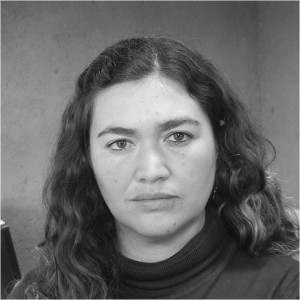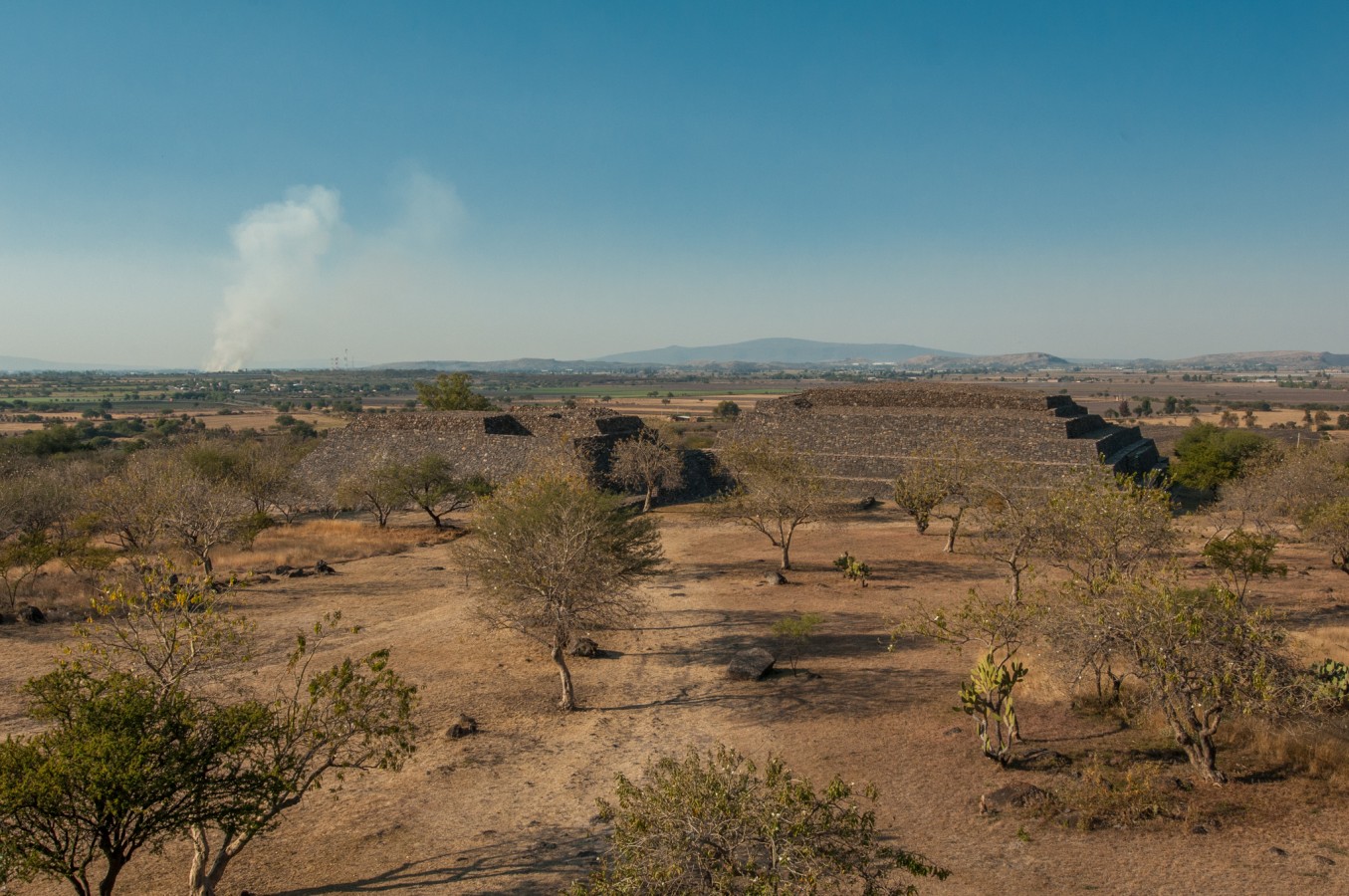Peralta Archeological Site
The south of Guanajuato is characterized by extensive grasslands which are irrigated by the Lerma River and known as El Bajío. Rich in fertile land, a large number of farming towns were established in this territory which maintained trade relationships with other sites in Mesoamerica.
The Peralta archeological site is located to the east of the town of Abasolo, on the northern side of the hilll of the same name, and stands out among all of the archeological remains in El Bajío for its complexity and size. The site comprises 20 buildings distributed from the top of the hill down to the lower ground near the river. The first records of the site date from the 1970s and 1980s, but the archeological project officially began in 2002.
To date, two buildings have been excavated and restored, and are suitable for public visits: La Mesita ("The Liitle Table") and El Divisadero ("The Lookout Point"). Both share a simple construction system based on a dry core of black basalt with a cladding made from the same material, bonded together with clay and vegetable fibres, adobe walls for residential areas, and staircases reinforced with blocks of red or yellow cantera stone. Some traces of clay stucco were also recorded.
The scale of La Mesita is notable: its base measures 482 by 426 feet and it is 40 feet in height. Efraín Cárdenas named this building the Recinto de los Gobernantes ("Governors' Enclosure") as it is considered to be a palace building, and inside there is a large plaza connected to a circular structure, similar to a stage. A little to the south of this circle there is a smaller plaza with graded seating and to the north there is a series of rooms. The Governors' Enclosure has two entrances, the main one being a stairway on the western wall, which leads to the circular structure, probably used by high-ranking individuals. The other entrance is simpler and is comprised of a narrow corridor located at the centre of the southern facade, believed to have been used by the rest of the population.
El Divisadero is found to the north-west of La Mesita, on a platform measuring 285 by 259 feet. This complex is comprised of a plaza and two pyramidal bases which delimit it to the east and the south. These plinths have a height of nearly 33 feet. The outline of these structures recalls the shape of those in Xochicalco: a large sloping wall topped with a small vertical wall. It can be observed at different points that the building was extended on more than one occasion. The entrance to El Divisadero is via a simple stairway of yellow cantera stone located in the northern facade, which ascends and descends the perimeter volume which demarcates the square. A combination of materials can be seen in the stairways of the two plinths, including cantera stone on the sloping sides and tezontle (volcanic rock) used on the raised slopes flanking the stair.
During the excavations, offerings were found behind the plinth: five obsidian knives and one made from flint; a small alabaster mask and fragments of arrowheads. Upon studying the materials, it was discovered that they are from a later period and were deposited after the site was abandoned. It is possible that certain groups remembered the building as a place to worship their ancestors and so they continued to visit it.







